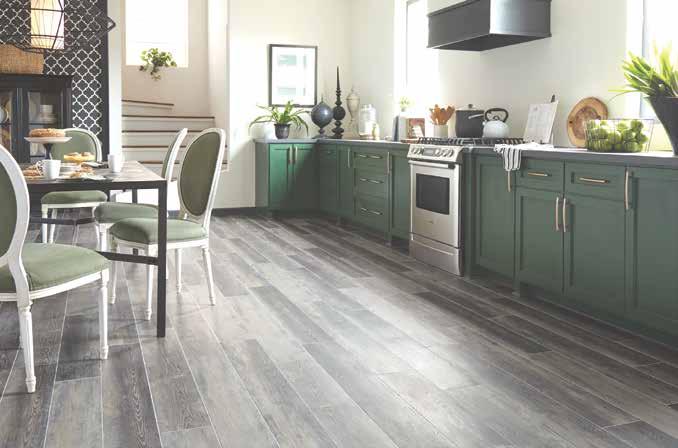Nature’s Wonder Surface Material
APC Cork
Cork is an amazing resource, with diverse uses. Cork flooring offers high performance and unmatched utility, in some cases for more than 100 years. In fact, if you have been to the Library of Congress, you have walked on a vintage, original cork floor!
S
ince 1898, cork floors have been used in public buildings, such as churches and libraries — long before it was used in residential applications. High fashion and sustainability are driving cork flooring these days.
Great Appearance + Environmental Responsibility = Renewed Interest in Cork
Cork manufacturers have seized upon the benefits of cork and developed colors and tile shapes that offer and infinite variety of patters. From large format tiles, to intricate inlaid borders, cork also comes in a color wheel of colors and shades. This is not your grandmother’s flooring. Cork’s unique natural aesthetic is finding favor among a generation looking for new textures and visuals. Cork introduces a fresh take on the perception of traditional interior surfaces.
The rising popularity of cork is not only testament to its attractive optics, but also to its excellent sustainability and environmental properties. Cork oak trees can live for 250 years and are capable of having their outer layers harvested every nine years throughout their lifetime with no damage to the tree. Some cork flooring primary materials are byproducts of wine bottle stopper manufacturing
Cork Looks Good and Does Good
Cork flooring offers excellent health and safety benefits. There are natural properties in cork that resist pests. Suberin is a substance in cork that repels insects, mites and mold, while protecting the floor from deteriorating. Studies have shown that Suberin also gives cork flooring important fire-resistant properties. An added benefit is that cork does not trigger allergies. ■
Left: Recolour Floating Plank in Blanc. Right: Recolour Floating Plank in Odysseus Creme
72 BEAUTIFULLY RESPONSIBLE | beautifullyresponsible.com









































